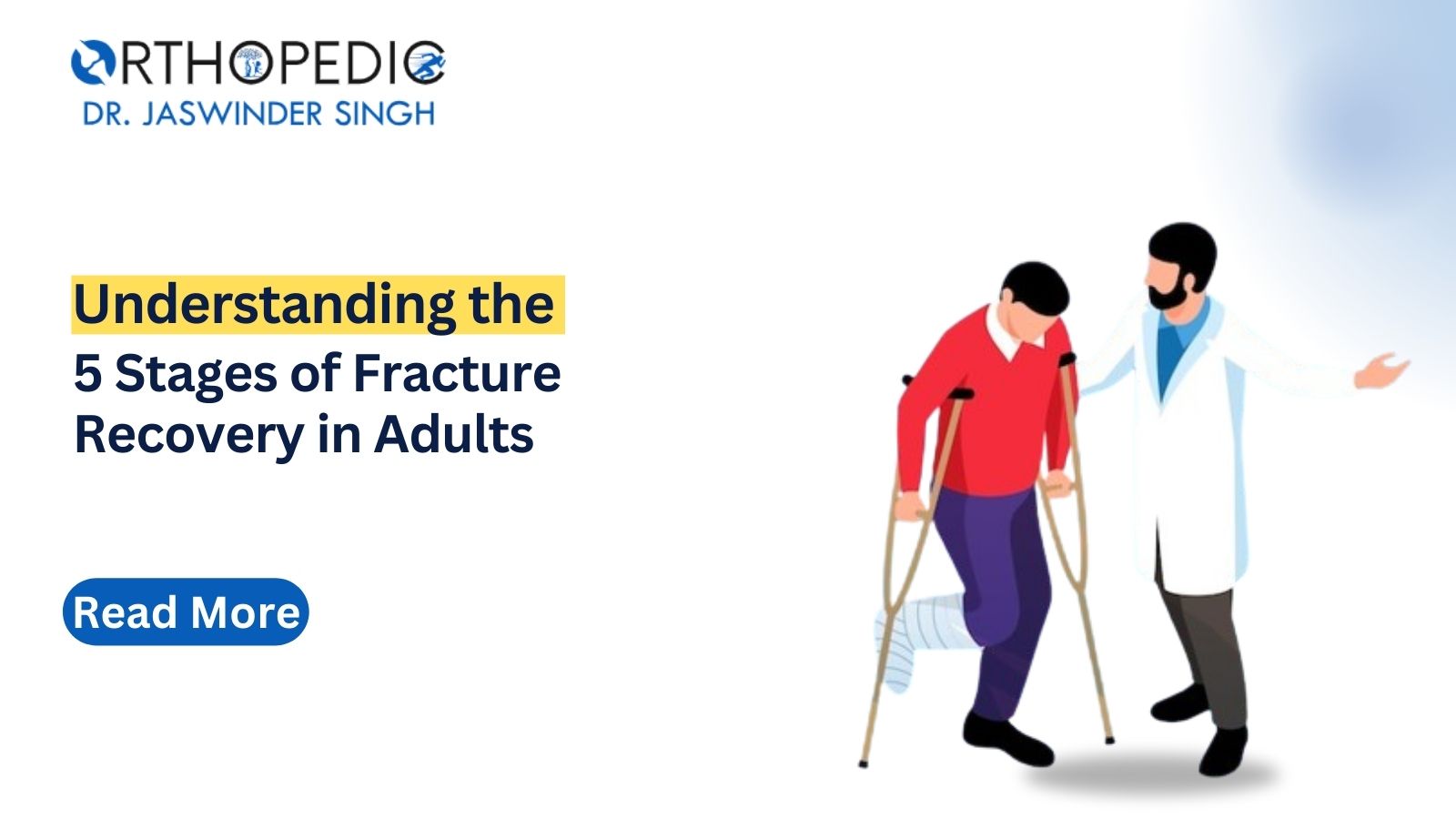

Bone fractures are common injuries that require a systematic and intricate healing process. The body can heal and rebuild bones in five stages. Knowing these stages is essential for those recovering from fractures and anyone wanting to keep their bones healthy. Maintaining healthy bones involves having the right balance of calcium and minerals, a balanced diet, regular exercise, and avoiding habits like smoking and excessive alcohol.
This lifestyle helps prevent fractures, support movement, prevent injuries, and help maintain good posture. Healthy bones reduce the chances of osteoporosis and improve your overall quality of life. Taking care of your bones is an investment in your well-being.
This article delves into the intricacies of the five stages of bone fracture healing and emphasizes the importance of maintaining healthy bones in our day-to-day lives.
- Hematoma Formation:
The first stage of bone fracture healing is the formation of a hematoma, which occurs immediately after the fracture. When a bone breaks, blood vessels nearby break, too, causing blood to gather. This blood clot acts like a natural bandage, stopping more bleeding and starting the healing process. The clot also signals the body to send immune cells and growth factors needed for the next steps in healing. - Fibrocartilaginous Callus Formation:
In the second stage, a soft callus forms around the fractured bone. Special cells called fibroblasts, which make collagen, enter the blood clot and create a matrix rich in collagen. This matrix becomes more solid over time, forming a fibrocartilaginous callus stabilising the broken bone. This temporary tissue acts like a bridge between the fractured bone ends, providing more stability and protection during the healing. - Bony Callus Formation:
As the healing process continues, the fibrocartilaginous callus is replaced by a bony callus, marking the third stage. Osteoblasts build bones, move to the broken bone area, and add minerals like calcium and phosphate. This process turns the soft callus into a sturdier structure, connecting the gap between the fractured bone ends. The resulting bony callus gives more stability and support, allowing for broader movement without the risk of further injury. - Bone Remodelling:
The fourth stage involves bone remodeling, a dynamic process where the newly formed bone tissue adjusts to meet the mechanical demands. Special cells, called osteoclasts, break down bone and remove extra bone material, and at the same time, osteoblasts continue adding new bone. This balance of eliminating and adding bone ensures it returns to its original shape and strength. This process can take weeks to months, depending on how severe the fracture is and the person's overall health. - Consolidation and Healing:
The final stage, consolidation and healing, sees the bone regain its original strength and structure. The sturdy bony callus undergoes more changes; over time, the fractured area becomes hard to tell apart from the rest of the bone. This transformation can take a while, and the bone may even become more potent at the spot where it was once broken.
Maintaining Healthy Bones in Day-to-Day Life:
While understanding the stages of bone fracture healing is crucial for those recovering from injuries, it's equally important to prioritize bone health in our daily lives to prevent fractures and support overall well-being. Some critical practices to promote healthy bones can be:
- Balanced Nutrition:
Ensure a diet rich in calcium, vitamin D, and other essential nutrients that support bone health. Dairy products, leafy greens, nuts, and fortified foods are excellent sources. - Regular Exercise:
Engage in weight-bearing exercises like walking, jogging, and resistance training to promote bone density and strength. - Adequate Vitamin D:
Sunlight is a natural source of vitamin D, which is vital for calcium absorption and bone health. Spend time outdoors and, if necessary, consider vitamin D supplements. - Avoid Excessive Smoking and Alcohol Intake:
Smoking and excessive alcohol intake can negatively impact bone health. Quitting smoking and moderating alcohol consumption contribute to overall well-being, including bone strength. - Fall Prevention:
Take precautions to prevent falls, especially in older adults. This may include removing tripping hazards at home, using assistive devices, and maintaining regular vision check-ups.
Conclusion:
Understanding the five stages of bone fracture healing provides valuable insight into the body's remarkable ability to recover from injuries. However, prevention is always better than cure. Make bone health a priority to reduce the risk of fractures and boost overall well-being. Include a balanced diet, regular exercise, and healthy habits in your daily routine for strong and enduring bones.
If you have specific concerns or need expert guidance on orthopaedic care in Patna, consider reaching out to Dr. Jaswinder and his orthopaedic services. Prioritize your bone health today for a more robust and healthier tomorrow by taking proactive steps toward maintaining strong bones and ensuring optimal musculoskeletal health.